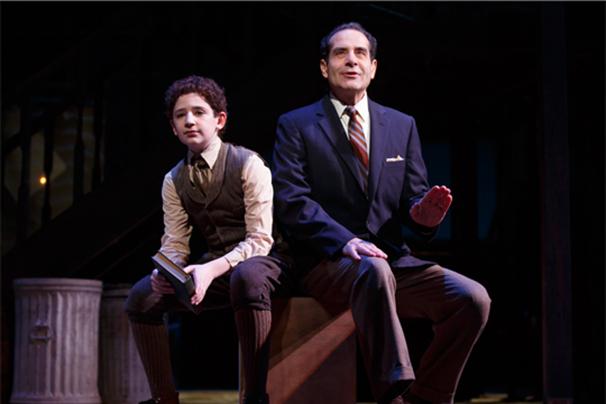
Theater is hard. This is the main message conveyed by “Act One,” a new play written and directed by James Lapine. The visually stunning production, currently running at Lincoln Center Theater, narrates the early life and theatrical career of playwright Moss Hart.
Hart is best known to today’s audiences as the librettist and director of the musical “My Fair Lady.” However, “Act One,” which is based on Hart’s memoir of the same name, chronicles his difficulties in finding a place in the theatrical community and the difficulties that he faced even after he found his way in.
“Act One” is headlined by Santino Fontana, hot off his success voicing a Disney villain in “Frozen,” and “Monk’s” Tony Shalhoub. The two men both play Hart — Fontana for the majority of the play and Shalhoub as an older version of Hart, which offers a retrospective insight into the character.
Shalhoub also plays Hart’s father and, more importantly, the infamous George S. Kaufman, the older and more experienced playwright who becomes Hart’s writing partner. After Hart has spent years directing amateur gigs and writing furiously, he and Kaufman finally team up to work on Hart’s play, “Once in a Lifetime.”
“Act One” is far stronger as a production than it is as a play. While the story is interesting enough, at times it raises unanswerable questions. During one scene in the middle of the play, viewers are introduced to a litany of 1920s stars, including Langston Hughes, the Gershwins and Dorothy Parker. The scene feels out of place in a drama that is otherwise closely focused on one man’s crafting of a play.
Furthermore, the relationship between Hart and Kaufman sometimes feels like the only one developed in the show. While Hart credits his Aunt Kate — played by the always entertaining Andrea Martin — for nurturing his love of theater, viewers never really get a sense of their relationship.
Overlooking quibbles like this, though, “Act One” is truly fantastic. The revolving set by Beowulf Boritt can only be described as thrilling, serving as a constant source of energy through a play that might otherwise seem to drag on.
Fontana gives an excellent performance, portraying Hart as earnest and frustrated, grasping at straws even as his chance at success dangles right in front of him. Shalhoub’s Kaufman is reminiscent of a batty professor whose weird quirks — such as the complete avoidance of physical contact — ring as true as his harshly honest but encouraging feedback on Hart’s writing.
There is no doubt that “Act One” provides an accurate view of what it is like to work in the theater. Great dramatists must write, rewrite, perform and then rewrite again.
The process can take years, as it did for Hart, and even then the product might not be completely right. But, when the potential outcome is a beautiful production like “Act One,” which succeeds through its flaws, it is easy to see why all that work is worth it in the end.
A version of this article appeared in the Thursday, May 1 print edition. Dylan Jarrett is books/theater editor. Email her at [email protected].






















































































































































